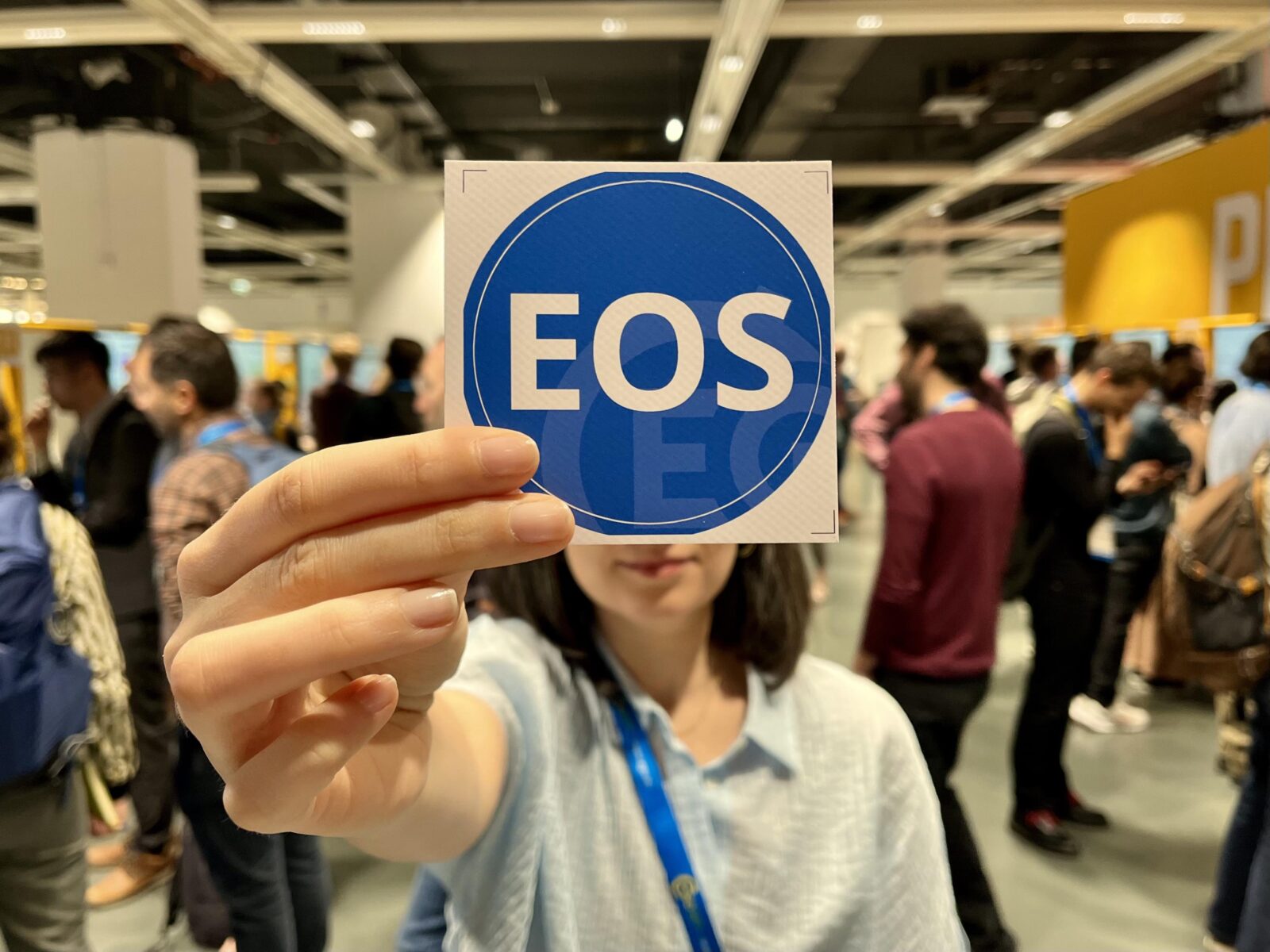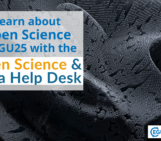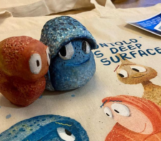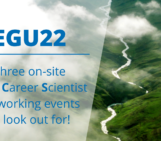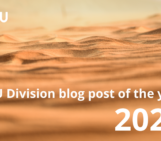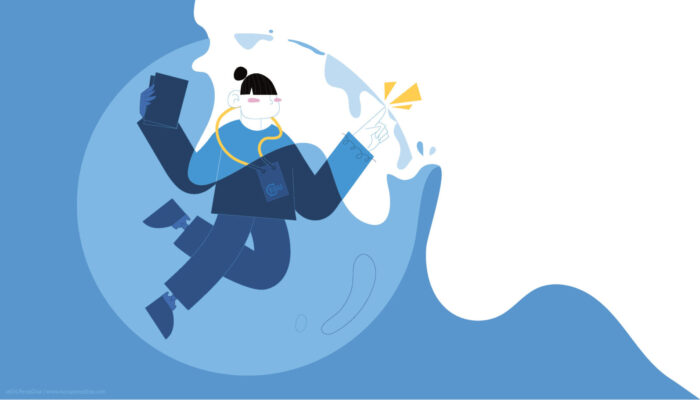
If you’ve ever been to the EGU General Assembly, you know the feeling: everything, everywhere, all at once. Thousands of posters, hundreds of sessions, and approximately a million things competing for your attention (including the lure of the sunshine outside, if only for five minutes).
Until someone invents a way to be in more than one place at once, we’re all stuck filtering. We comb through the programme, starting with sessions in our division of specialism, and often ending there too. But isn’t that kind of missing the point of EGU? By design, this is a conference where everything is everywhere all at once — and maybe, just maybe, that’s how it’s meant to be.
We (scientists) wear a lot of hats:. The researcher, the communicator, the collaborator, the problem solver. And we certainly don’t do science just for the sake of it — it’s meant to ripple outward and make a difference. For science to move forward, it can’t live inside a bubble – so neither should you.
In this piece, I offer you a few ways to step outside your niche (I know I know, you don’t have time…but these require minimal time investment). Give them a try — you might just open a few unexpected doors, and even have a bit of fun along the way!
1. Learn from good (and bad) design
Scientific posters are infamous for one very specific reason: they’re not exactly eye candy. Yes, I said it. But we all thought it, right? Walls of dense text, figures that make you strabismic (going cross-eyed), titles that cause your brain to spin. But hey, buried in all this chaos, there are absolute gems — you just have to find them.
It is not really surprising, of course. Even if science cannot truly advance without proper and effective dissemination, most scientists never receive formal training in science communication; they’re just expected to learn by doing. The good news is, EGU gives you a brilliant opportunity to do exactly that. Wander into a poster session (extra points if it is one outside your field) and hunt for beautiful layouts, eye-catching graphics, curiosity-sparking titles. Take mental notes (or even a photo, so long as the authors are happy for you to do that), to try on your next poster design.
Good design is good design regardless of whether the poster is about glaciers, groundwater, or gamma rays.
The same trick works for talks, too. When you’re sitting through a session, don’t just focus on the science — pay attention to how it’s delivered. Who caught and kept your attention? Who lost it? Was it clever slide design? A clear story arc? Infectious enthusiasm? Perhaps even puns and the touch of humour made them memorable? Stealing a few communication moves from a great speaker is not only allowed — it’s highly recommended.
In short: don’t stop at just noticing the science. Notice the style too – the good, the bad, and the ugly. Your future self (and your future audiences) will thank you. And unlike attending a session on communicating uncertainty or engaging with diverse audiences (which would add to your already packed week), noticing how science is delivered takes zero extra time investment.
2. Embrace the unknown
Here’s a radical idea: go to a talk where you have absolutely no clue what’s going on. If this sounds a bit too far out of your comfort zone, maybe pick something you’re just mildly curious about, like a science hobby you have never admitted to anyone, or a childhood obsession that faded out – Martian dust storms, palaeomagnetism, submarine landslides. Maybe you were a huge fan of what Ross from Friends does for a living? Then sit back and embrace the unknown. You’re not there to master the material in 15 minutes. You’re there to practice curiosity — one of the core ingredients of science itself.
And don’t stop at the pure science sessions. Explore EOS (Education and Outreach) sessions too. These cover the human side of science — how it is taught, how it shapes policy, who gets left out, and how we build a better future for everyone in the field. Read through the list of EOS sessions and wait for your brain to say “How is that even relevant to my work (or to science, as a whole)?”. That’s the one. That is your invitation to go find out.
We all play a role in creating better, fairer, more inspiring spaces for science to grow. It’s not someone else’s job. It’s yours too. Attending even just one EOS session can give you a new appreciation for the challenges — and privileges — that shape our scientific world, and what you can do to help advance it into a better space for all.
EGU25 is more than just a showcase of thousands of scientific topics; it’s a showcase of thousands of scientific points of view. And as such, it’s an opportunity to realise just how diverse, multidisciplinary, and sometimes messy science really is.
3. Look After Yourself (and Your Perspective)
Yes, you should take breaks – proper ones. Not just sprinting from one room to the next while inhaling a blueberry muffin. Remember that the outside exists — and that it actually is sunny out there. Some of the best ideas — and collaborations — are born not in lecture halls, but in easy, unplanned conversations in the sunshine.
But there’s another side of wellbeing that gets less attention: remembering that what you’re seeing across poster halls and lecture theatres at EGU25 isn’t the whole story. Behind every presentation, every poster, every confident speaker — lies a a series messy drafts, failed experiments, rejected papers, and a certain degree of chaos. Science is built on trial, error, and more error. We all know that. And yet, when we are surrounded by everybody else’s “final product,” imposter syndrome may creep in.
If you need a breath of fresh air, check out BUGS: Blunders, Unexpected Glitches and Surprises – a celebration of the stumbles that come with doing real science — and a reminder that struggling doesn’t make you an outsider. It makes you part of the community.
Stepping outside your science bubble at EGU doesn’t have to be overwhelming. It can be as simple as wandering into a different poster hall, sitting through an unexpected session, or having a coffee with someone and discussing the BUGS in your own work. The beauty of the EGU GA is its interdisciplinarity — when else do you get to share a roof with experts from every corner of the Earth sciences?
So, instead of worrying that wandering outside your division will make you miss something crucial, maybe it’s time to flip that idea on its head. Staying within your familiar field? Now that’s the real “missing out.” Make your schedule flexible, and allow yourself to explore the parts of EGU that would normally pass you by. You might just stumble upon exactly what you didn’t know you were looking for.

